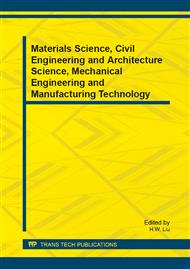p.1363
p.1371
p.1375
p.1379
p.1383
p.1387
p.1391
p.1395
p.1400
The EOQ Model for Hybrid Manufacturing/Remanufacturing System Considering Time-Value of Costs
Abstract:
The static EOQ (economic ordering quantity) model for manufacturing/remanufacturing hybrid system was improved from the point of view of time-value of system costs, and further considered the effect of time-value of money in inventory management of the hybrid system. A modified dynamic EOQ model based on time-value of system costs was proposed for a hybrid system. The main purpose of the dynamic EOQ model was to study how to determine optimal ordering quantity of the hybrid manufacturing/remanufacturing system. A numerical comparison analysis between the different models was given to illustrate the difference of the average cost and the optical ordering quantity. The results shown the modified EOQ model was often considered a more correct way in the hybrid manufacturing/remanufacturing system. The sensitivity analysis was also made to investigate the effects of main parameters on the modified EOQ model.
Info:
Periodical:
Pages:
1383-1386
Citation:
Online since:
January 2014
Authors:
Keywords:
Price:
Сopyright:
© 2014 Trans Tech Publications Ltd. All Rights Reserved
Share:
Citation:


